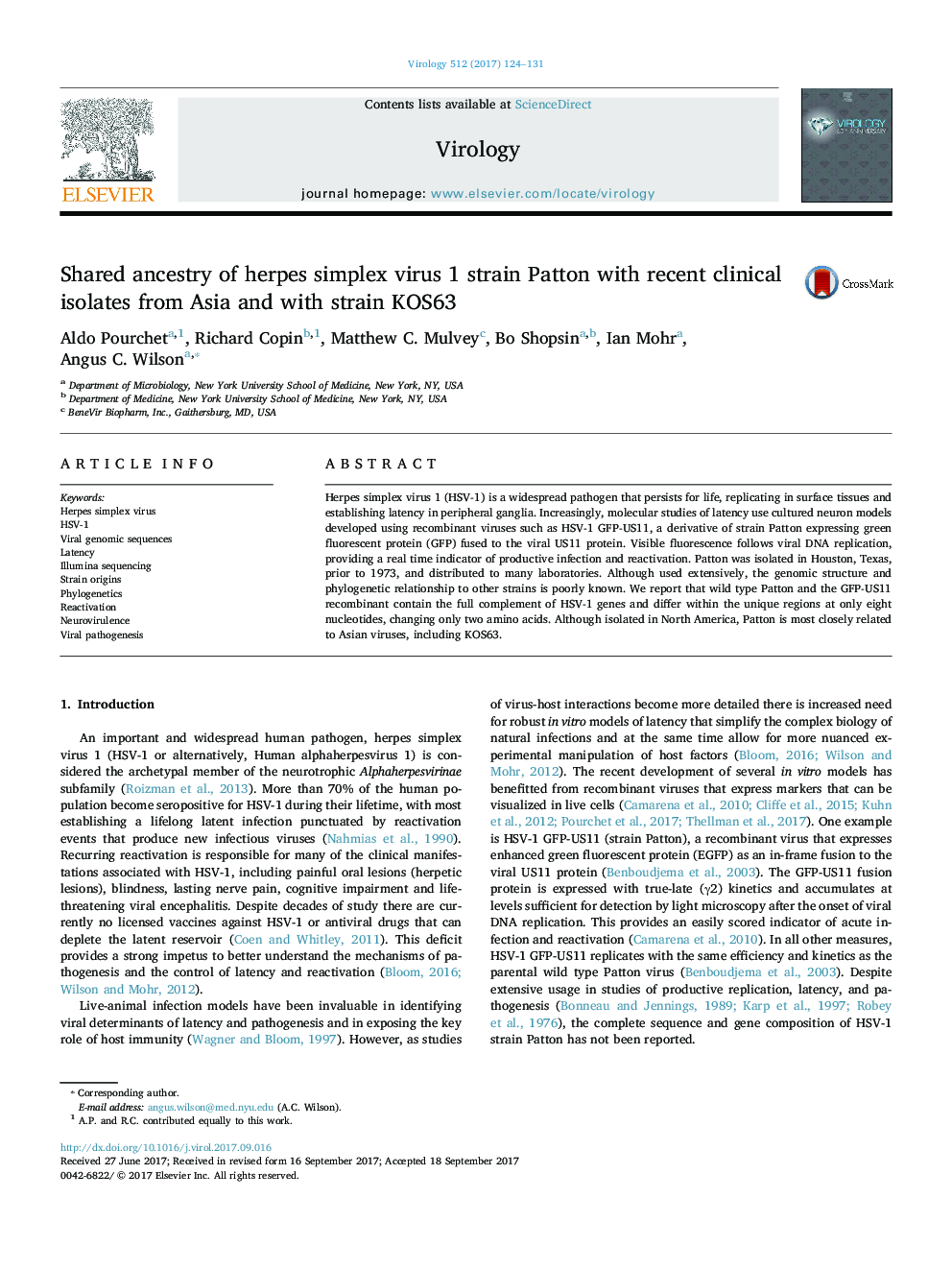| Article ID | Journal | Published Year | Pages | File Type |
|---|---|---|---|---|
| 5674843 | Virology | 2017 | 8 Pages |
â¢Next generation sequencing of parental strain Patton and GFP-US11 recombinant viruses.â¢Remarkable conservation of genome sequence despite extensive manipulations.â¢Both viruses contain the full complement of viral genes.â¢Strain Patton is closely related to KOS63 and recent isolates from Asia.â¢Identify deletion of three residues within the beclin-binding domain of ICP34.5 protein.
Herpes simplex virus 1 (HSV-1) is a widespread pathogen that persists for life, replicating in surface tissues and establishing latency in peripheral ganglia. Increasingly, molecular studies of latency use cultured neuron models developed using recombinant viruses such as HSV-1 GFP-US11, a derivative of strain Patton expressing green fluorescent protein (GFP) fused to the viral US11 protein. Visible fluorescence follows viral DNA replication, providing a real time indicator of productive infection and reactivation. Patton was isolated in Houston, Texas, prior to 1973, and distributed to many laboratories. Although used extensively, the genomic structure and phylogenetic relationship to other strains is poorly known. We report that wild type Patton and the GFP-US11 recombinant contain the full complement of HSV-1 genes and differ within the unique regions at only eight nucleotides, changing only two amino acids. Although isolated in North America, Patton is most closely related to Asian viruses, including KOS63.
